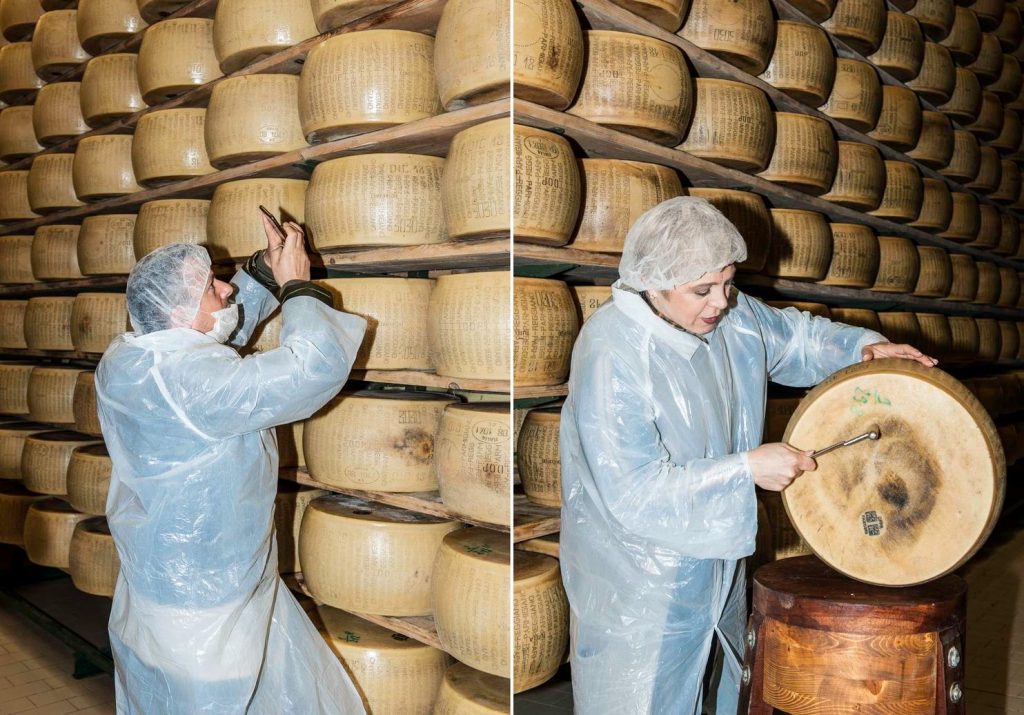
The barrels finished at $1.72, up 1 1/2-cents and 20 cents above a year ago.
The cheese was unchanged Monday. The blocks inched a half-cent lower Tuesday, slipping to $1.82, while the barrels gained a quarter-cent, climbing to $1.7225, as traders await the June Dairy Products report on Thursday. The spread is at 9 3/4-cents.
FC Stone says the cheese market is in balance around current levels but “the main bearish argument floating around last week is the vulnerability of U.S. export sales due to lower cheese prices abroad. European Gouda is quoted in the mid to high $1.40 range with European Cheddar trading in the low to mid $1.50s. Oceania Cheddar prices are higher but remain weaker than the U.S.”
FC Stone adds, “While we won’t argue the U.S. cheese price may cool export demand, we want to underline that, in our opinion, it hasn’t really been exports that got us to where we are today. The U.S. cheese market is balancing less overall milk and less Cheddar production against solid domestic demand. Exports are critical to the U.S. dairy growth strategy, but it’s the other 85% of the market that’s in the driver’s seat.”
Dairy Market News reports that “bullish reports and sentiment regarding cheese inventories have been few and far between for a number of years. However, contacts are pointing out declining inventories following the June Cold Storage report.”
Midwestern cheese producers have been regularly reporting tighter management of production schedules and milk intake levels since last year.
Western cheese demand is also good enough to keep inventories from building too much, according to DMN. However, high temperatures are keeping grilling from developing as it should so cheese demand is a bit lower than expected. Cheese output is “stable to declining.”
Butter fell to $2.36 per pound last Tuesday but closed Friday at $2.37, down 2 3/4-cents on the week but 10 3/4 above a year ago.
It lost 2 cents Monday and fell another 2 1/4-cents Tuesday, to $2.3275, lowest CME price since May 9.
“Butter market participants seem to be weighing the larger than expected June Cold storage number against strong cream demand,” says FC Stone. “Although fat for ingredient use continues to be quite strong, we normally start seeing butter stocks seasonally wind down from May into June. Not this year. Consistently large butter imports coming into the U.S.” are also a factor cited.
DMN reports that cream volumes were “expectedly beyond the grasp of butter makers last week.” Spot loads headed to ice cream. “Bulk butter inventories are widely available and declining prices are evidence of increased availability. Contacts are somewhat concerned about rising inventory but suggest July numbers will paint a picture the rest of the year.”
Western butter production is active but some butter makers are willing to sell cream instead of churning. There are still adequate amounts of cream available, says DMN, but plenty of buyers looking.
Grade A nonfat dry milk climbed to $1.03 per pound by Friday, up 2 1/4-cents on the week and 21 1/4-cents above a year ago.
Monday’s powder was up a half-cent and it pushed a quarter-cent higher Tuesday to $1.0375, highest since July 8.
Ears to the rail reportedly indicate that upper Midwest cheese plants are fortifying their vats with nonfat dry milk as fluid milk is in shorter supply.
“July offered a powder price gift of sorts to end-user buyers,” says FC Stone. “While there’s little on the radar to suggest prices need to soar higher in the short-term, reading the tea leaves reveals that end-users are not sitting on mountains of powder right now.”
CME dry whey got to 35 3/4-cents per pound last Wednesday but saw its Friday close at 35 1/4-cents, up 1 1/4-cents on the week but 7 1/4-cents below a year ago.
The whey fell 1 1/4-cents Monday and stayed there Tuesday at 34 cents per pound.
Whey impacted
The outbreak of African Swine Fever in China continues to have ramifications for dairy farmers, according to Hoards Dairyman managing editor, Corey Geiger. Speaking in the July 29 Dairy Radio Now broadcast, Geiger said that he heard first-hand reports of it after speaking at the recent China Dairy Expo, which was attended by 65,000 people and featured 500 commercial exhibitors.
China’s hog population amounted to about 441 million last year, he said, almost half the world’s total, and while government reports say 20 to 25% of those hogs have been culled, others say the total is closer to 60%.
Whey is an amino acid and protein that makes great hog feed, Geiger said, but U.S. exports of whey to China have plunged 49%, not due to the tariff war but because of the reduced hog population. He added that ASF is deadly to pigs but does not affect humans or dairy animals. It is contagious and essentially all 32 provinces in China have it, he said, but it has spread to Vietnam, Cambodia, Laos and Russia. Hogs are the No. 1 protein source in China, he concluded, and ASF will have a long term impact because “they can’t quickly rebuild that herd.”
Culling drops
U.S. dairy farmers retired fewer cows in June than in May and fewer than in June 2018. The latest Livestock Slaughter report shows an estimated 231,200 head were slaughtered under federal inspection, down 26,900 from May and 6,300 or 2.7% below a year ago. The six-month cull count was at 1.6 million head, up 68,800 or 4.4% from a year ago.
Sales correction
The Agriculture Department revised its April fluid milk sales report and while the correction is better news, it still begs for a change of direction. The revised data shows 3.8 billion pounds of packaged fluid sales, up from the 3.7 billion originally reported but still down 1% from a year ago versus the 3.1% drop reported originally.
Conventional product sales totaled 3.6 billion pounds, down 0.4% from a year ago, instead of 2.4%. Organic products, at 188 million pounds, were down 11.0%, instead of 16.5% and represented about 4.9% of total sales for the month.
Packaged fluid sales, January through April, totaled 15.6 billion pounds, down 2.0% from a year ago.
Conventional products year-to-date totaled 14.8 billion pounds, down 1.8%. Organic products, at 819 million pounds, were down 6.1% and represented about 5.3% of total fluid milk sales for the period.
























